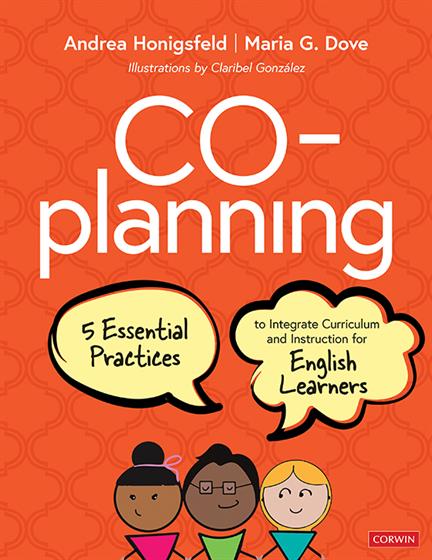Chapter 1: Introduction
Why is There a Need for a Book on Collaborative Planning?
What is Collaborative Planning?
What are Some Requirements for Successful Collaborative Planning?
What is in This Book?
How is This Book Organized?
Where is the Evidence for Collaborative Planning?
Words of Caution
Collaborative Reflection Questions
Collaborative Action Steps
Chapter 2: Curriculum Development, Mapping, and Alignment for Integrated Instruction
Curriculum Perspectives
The Challenges of Standards-Based Curriculum
Developing Curriculum with ELs/MLs in Mind
Quality Curriculum for ELs/MLs
Types of Programs and Related Curricula
Integrated Curricula for ELs/MLs
Defining Integrated Instruction for ELs/MLs
Designing Integrated Curricula for ELs/MLs
A Deeper Dive into Developing Integrated Curricula for ELs/MLs
Prerequisites
Review, Revise, and Repeat
Tools of the Trade
Celebrations
Collaborative Reflection Questions
Chapter 3: Data-Informed Planning and Evidence-Based Instructional Decision Making
Learner Portraits
The Data-Informed Collaborative Planning Cycle
The Blueprint for Data-Informed Collaborative Planning
Tri-Part Approach to Assessment
Tools of the Trade
Celebrations
Collaborative Reflection Questions
Collaborative Action Steps
Chapter 4: Co-Planning Routines, Frameworks, and Protocols Overview
Defining Routines and Frameworks
General Tenets In Planning for Language Instruction
Collaborative Planning Frameworks
Instructional Frameworks
Understanding by Design
The Gradual Release of Responsibility (GRoR)
Universal Design for Learning (UDL)
Sheltered Instruction Observation Protocol (SIOP) Model
An Instructional Framework Using Multiple Lenses
Planning Content and Language/Literacy Integration
Planning Instruction Through Multiple Lenses
Routines
A Co-Planning Routine
Additional Co-Planning Routines
Planning with Instructional Routines in Mind
Increasing the Effectiveness of Collaborative Routines
Tools of the Trade
Celebrations
Collaborative Reflection Questions
Collaborative Action Steps
Chapter 5: Planning for Integrated Language and Literacy Development
Content and Language: What’s the Relationship?
Integrated Planning for Instruction
Planning for Academic Language on Three Dimensions
Suggestions for Planning Word-Level Academic Language Integration
Suggestions for Planning Sentence-Level Academic Language Integration
Suggestions for Planning Discourse-level Academic Language Integration
Multi-Dimensional Intentional Planning
Planning for Oracy and Literacy
Planning Across Levels of Literacy
Planning Across Literacy Roles
Planning for Language and Literacy Development Across Disciplines
Tools of the Trade
Celebrations
Collaborative Reflection Questions
Collaborative Action Steps
Chapter 6: Multidimensional Scaffolding for Rigor, Relevance, Relationships, and Research-Informed and Evidence-Based Best Practices (4 Rs)
Scaffolding Defined
Scaffolding Redefined for the 4 R’s
Scaffolding for Rigor
Scaffolding for Relevance
Scaffolding for Relationships
Scaffolding for Research-Informed and Evidence-Based Best Practices
Collaborative Planning with the 4 R’s
Unpacking the Nine Dimensions of Scaffolding
1. Instructional Scaffolding
2. Linguistic Scaffolding
3. Multimodal Scaffolding
4. Multisensory Scaffolding
5. Digital Scaffolding
6. Graphic Scaffolding
7. Collaborative Scaffolding
8. Social-Emotional Scaffolding
9. Environmental Scaffolding
Collaborative Planning Using the 9 Dimensions of Scaffolding
Tools of the Trade
Celebrations
Collaborative Reflection Questions
Collaborative Action Steps
References



